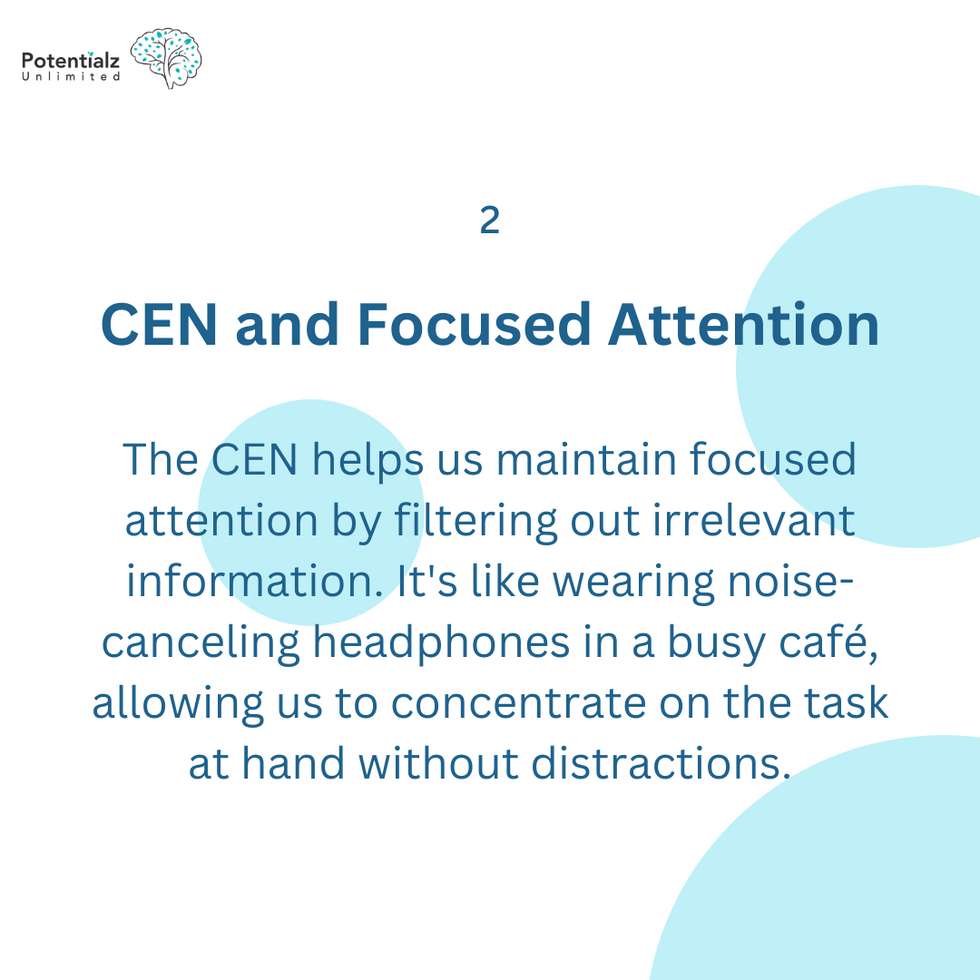The Default Mode Network and Neurodivergent Profiles: Understanding Cognitive Flexibility
- Gurprit Ganda
- Jan 8
- 4 min read

Cognitive flexibility, the ability to switch between different mental tasks and adapt to new information, is a complex cognitive function that involves the intricate interplay of several brain networks. For neurodivergent individuals, particularly those who are highly creative or gifted, understanding how the Default Mode Network (DMN) interacts with other key brain networks can provide valuable insights into their cognitive strengths and challenges.
The Default Mode Network (DMN)
The DMN, often referred to as the "mind's backstage," is a network that encompasses regions such as the medial prefrontal cortex, posterior cingulate cortex, and bilateral angular gyri. Historically, the DMN was seen as a network that hindered task performance due to its deactivation during attention-demanding tasks. However, recent studies have revealed its extensive functional and structural connectivity to other brain regions and its crucial role in self-referential thinking, memory, and social cognition.
Interaction with the Central Executive Network (CEN)
The CEN, which includes the dorsolateral prefrontal cortex and the posterior parietal cortex, is responsible for problem-solving, goal-directed behavior, and attention. The CEN and DMN are typically anticorrelated, meaning that when the DMN is active, the CEN is less active, and vice versa. This push-pull dynamic is essential for cognitive flexibility, allowing the brain to switch seamlessly between introspective and extrospective modes depending on task demands.
In neurodivergent individuals, this balance can be particularly critical. For example, individuals with Autism Spectrum Disorder (ASD) or Attention Deficit Hyperactivity Disorder (ADHD) may exhibit altered connectivity patterns between the DMN and CEN. In ASD, there may be increased DMN activity that affects social cognition and self-referential thinking, while in ADHD, the competition between the DMN and CEN can lead to difficulties in maintaining focus.
The Role of the Salience Network (SN)
The Salience Network, anchored by regions like the anterior insula and the anterior cingulate cortex, acts as a "stage manager" that monitors incoming stimuli and determines which network should be active. The SN plays a crucial role in modulating the switch between the DMN and CEN, ensuring that the brain can adapt fluidly to shifting mental demands.
In neurodivergent profiles, the SN's function can be pivotal in managing the balance between introspection and goal-oriented tasks. For instance, in highly creative neurodivergent individuals, the SN may facilitate a smoother transition between the DMN's introspective mode and the CEN's focused engagement, enabling the integration of internal ideas with external tasks. This dynamic can enhance cognitive flexibility, allowing these individuals to excel in creative and problem-solving tasks.

Cognitive Flexibility in Highly Creative or Gifted Neurodivergent Profiles
Highly creative or gifted neurodivergent individuals often exhibit unique cognitive profiles that leverage the strengths of both the DMN and CEN. Here are a few key points to consider:
Enhanced Introspection: The DMN's heightened activity in these individuals can lead to rich internal narratives and a deep engagement with self-referential thinking. This can be a source of creativity and innovation, as internal ideas and memories are extensively processed and integrated.
Flexible Switching: The ability to switch between the DMN and CEN, facilitated by the SN, allows these individuals to move seamlessly between introspective and goal-oriented states. This flexibility is crucial for creative problem-solving, where internal ideas need to be translated into external actions.
Balancing Networks: The balance between the DMN and CEN is essential for optimal cognitive functioning. In highly creative neurodivergent individuals, this balance can be particularly delicate. Too much DMN activity might lead to daydreaming or distraction, while too much CEN activity might stifle creativity. The SN's role in modulating this balance is therefore critical.
Practical Strategies for Enhancing Cognitive Flexibility
For neurodivergent individuals looking to optimize their cognitive flexibility, several strategies can be beneficial:
Mindfulness and Meditation: Practices that enhance the SN's ability to switch between networks can improve cognitive flexibility. Mindfulness and meditation can help in developing better control over the transition between introspective and goal-oriented states.
Task Segmentation: Breaking tasks into smaller, manageable segments can help in balancing DMN and CEN activity. This approach allows for focused engagement (CEN) followed by periods of introspection (DMN), enhancing overall cognitive flexibility.
Creative Expression: Engaging in creative activities can leverage the strengths of the DMN while also requiring the CEN to translate these ideas into tangible outputs. This interplay can enhance cognitive flexibility and overall creative performance.
Conclusion
The interaction between the DMN, CEN, and SN in neurodivergent individuals is complex and multifaceted. Understanding these interactions can provide insights into the cognitive strengths and challenges faced by highly creative or gifted neurodivergent profiles. By recognizing the importance of balancing introspective and goal-oriented states, and by employing strategies that enhance this balance, neurodivergent individuals can optimize their cognitive flexibility and leverage their unique cognitive profiles to achieve their full potential.
References
Vatansever, D., Manktelow, A. E., Sahakian, B. J., Menon, D. K., & Stamatakis, E. A. (2016). Cognitive Flexibility: A Default Network and Basal Ganglia Connectivity Perspective. Brain connectivity, 6(3), 201–207. https://doi.org/10.1089/brain.2015.0388
Wikipedia. (2024). Salience network. Retrieved from https://en.wikipedia.org/wiki/Salience_network
Bright Insight. (2024).The Default Mode Network and Neurodiversity. Retrieved from https://www.brightinsight.support/post/dmn-and-neurodiversity-working-draft
Chand, G. B., Wu, J., Hajjar, I., & Qiu, D. (2017). Interactions of the Salience Network and Its Subsystems with the Default-Mode and the Central-Executive Networks in Normal Aging and Mild Cognitive Impairment. Brain connectivity, 7(7), 401–412. https://doi.org/10.1089/brain.2017.0509
Chand, G. B., & Dhamala, M. (2016). Interactions Among the Brain Default-Mode, Salience, and Central-Executive Networks During Perceptual Decision-Making of Moving Dots. Brain connectivity, 6(3), 249–254. https://doi.org/10.1089/brain.2015.0379






























